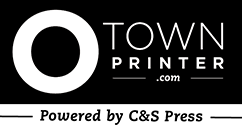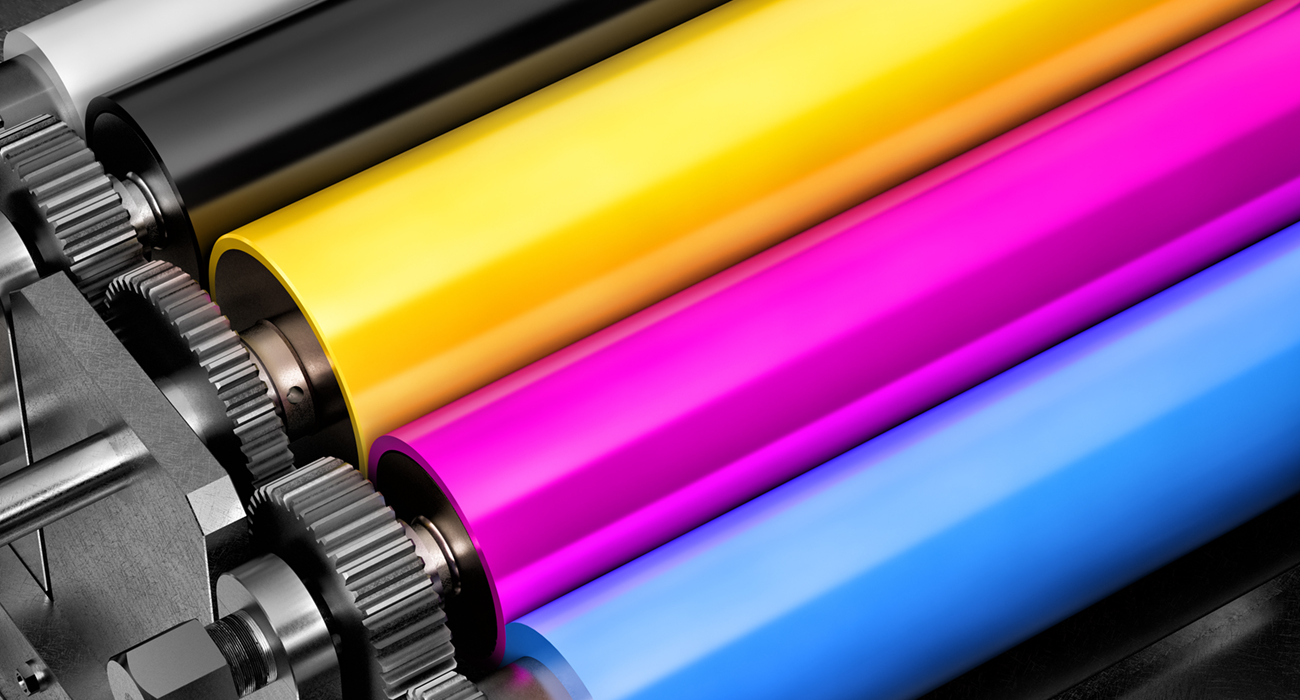If you’re in the market for brochures, business cards, posters, or other marketing materials, you already know that you’re going to need to come up with the perfect design, color scheme, copy and layout. However, even after you’ve checked all those boxes – you are left with an important question; digital or offset printing and what’s the difference between the two and does it even matter? Printing is printing, right?
Not exactly… let’s take a deeper look to 1. Define the Terms and 2. See the two printing methods, their differences and which one is best to obtain the best quality for your printing project.
Offset Printing utilizes aluminum-based plates, or plates made from similar metallic material. For every color during the printing process a separate metal plate has to be used. Each plate has to be laser etched using information from digital file of the image. The plate is attached to a roller, known as the plate cylinder, which will transfer ink to another cylinder with rubber sheet known as a blanket, which then rolls the ink onto paper, vinyl or whatever print material is being used.
Digital Printing process does not use aluminum plates with the image etched onto them. Instead, the image is digitally transferred from a computer to the digital printing machine. Digital printing uses electrostatic rollers, more commonly known as drums, to apply toner to sheets of paper. This is a similar process used by most inkjet printers.
For every color used during printing a different drum must be used. Unlike digital printing an initial warmup run is not necessary to ensure ink will be properly applied to the print material.
Pros & Cons to offset printing
Pros:
- Superior image quality that is reliable. Count on offset printing for clean, distinct type and images without streaks or spots
- Better color fidelity, which refers to both the accuracy of the colors and their balance in the design. Because offset printing can mix custom color inks for each job, it’s naturally going to get the colors spot-on.
- Works equally well on almost any kind of material.
- For large volume jobs, you get more for your money. It costs a lot to start an offset job. You have to invest money into creating the plates, which takes time. However, once you’ve invested it, all of the materials are ready to go, and you’ll actually spend less on big offset jobs than a digital print, which is about same per piece no matter how big the job gets.
Cons:
- High cost of low-volume jobs
- Longer timetable since plates need to be created
- Worse fallout in case there’s an error. If you don’t catch a typo on a plate and ruin a batch it’s harder to fix and the process starts all over again
Pros & Cons to digital printing
Pros:
- Faster turnaround time
- Each print is identical. You risk fewer odd variations caused by imbalances in water and ink.
- Cheaper for low volume jobs. The price per unit drops for offset printing, so at some point they crisscross.
- Changing information within a single print job. For example, say you were printing out postcards advertising a concert. You could actually change the dates and locations for part of the batch to create two sets of cards for two shows.
Cons:
- Fewer options in materials you can print on
- Less color fidelity is possible with digital printing because digital jobs use standard inks that cannot exactly match all colors.
- Higher cost for large-volume jobs
- Slightly lower quality

